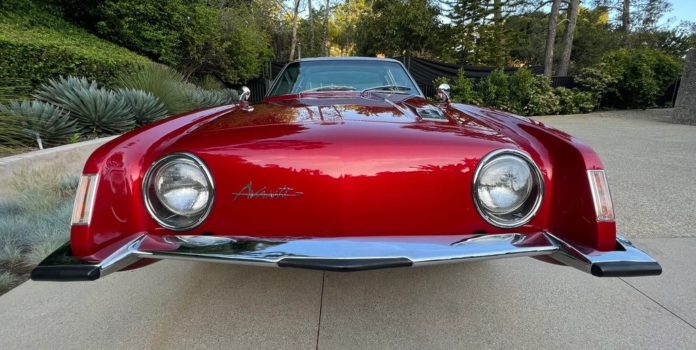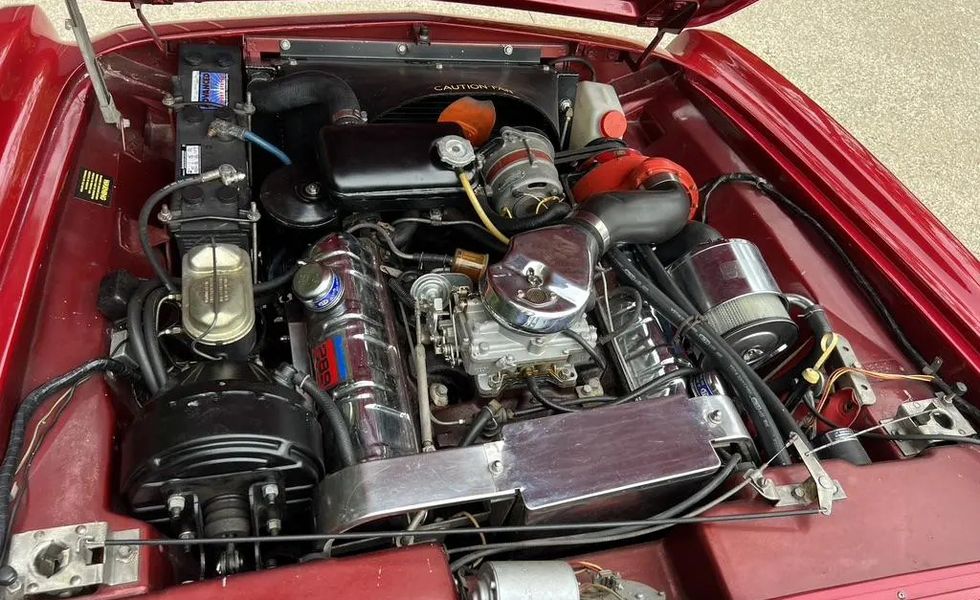- Studebaker’s Avanti was a last, lovely roll of the dice for the independent carmaker.
- The R2 version featured a supercharged 289-cubic-inch V-8 and only 1833 were built.
- This no-reserve auction runs through July 5.
The grille-less design of the Studebaker Avanti is perhaps an acquired taste, but the story of the car’s creation has broad appeal. Tasked with shuttering Studebaker’s car operations and focusing on trucks only, new president Sherwood Egbert instead rolled the dice on a radical design sketched out on a cocktail napkin during a cross-country flight. Working in a rented house in Palm Springs, the design team pulled the car together in record time. The dramatic result, though, couldn’t save the company. This well-kept and supercharged Studebaker Avanti R2 is for sale on Bring A Trailer, which like Car and Driver is part of Hearst Autos.
First, a brief history lesson. During the 1950s, Studebaker was a long-established brand that was essentially caught in the three-way crossfire between General Motors, Ford, and Chrysler. While the domestic auto giants battled it out, Studebaker edged closer to bankruptcy, and despite a merger with Packard, was barely keeping the doors open as the 1960s arrived.
Enter Sherwood Egbert, ex-USMC Major. Despite having a name suitable for an accountant, Egbert had served in the South Pacific during WWII and was as tough as they come. He came to head Studebaker via the Packard merger, as Packard owned the company Egbert worked for, McCullough Motors. McCullough Motors was a chainsaw manufacturer (now part of Husqvarna) and also had a supercharger division called Paxton Automotive, still around today.
Egbert arrived at Studebaker without any automotive experience, but he grabbed the reins with both hands. Convinced that the market had room for a small, premium four-seater, he tasked the team of Raymond Loewy, Tom Kellog, Bob Andrews, and John Ebstein to design a car in just 40 days. (As an aside, Kellog, the youngest of the four, would go on to sketch out the original Star Trek shuttle.)
Underneath, the Avanti was basically Studebaker’s older Lark model, but with a stylish fiberglass body on top. Think four-seat Corvette—the body was built by the same supplier that made body panels for the ‘Vette in the 1950s.
Also recycled was the 289-cubic-inch V-8 from the Studebaker Hawk. Happily, thanks to the Paxton link, strapping a supercharger on that engine cost just $210. As the Avanti was just over $4000 to start, the car was something of a performance bargain.
This 1963 example is fitted with that optional supercharger, giving the V-8 a healthy 290 horsepower and 303 pound-feet of torque. With a three-speed automatic transmission and limited-slip differential, and niceties such as power steering and electric windows, this Avanti Red coupe would have turned a few heads in its day. It still does.
As one of just 1832 R2 models built for the 1963 and 1964 model years, it is a rare and collectible machine. Again, think of it as a more genteel Corvette, and the appeal is obvious.
As for Egbert and his dreams, those ended in 1963 as the Avanti failed to sell in sufficient numbers. Further, he was diagnosed with cancer in 1962 and did not survive the decade.
But back in August of 1962, when this car was built, a trio of supercharged Studebaker Avantis showed up at the Bonneville Salt Flats and proceeded to break some 29 production-car speed records. The next year, Avanti serial number R1007 set a speed record of 170.81 mph, making it the fastest production car in the world.
The original Avanti’s flame burned briefly but brightly. And an early-’60s example like this is still filled with that spirit of audacity.

Contributing Editor
Brendan McAleer is a freelance writer and photographer based in North Vancouver, B.C., Canada. He grew up splitting his knuckles on British automobiles, came of age in the golden era of Japanese sport-compact performance, and began writing about cars and people in 2008. His particular interest is the intersection between humanity and machinery, whether it is the racing career of Walter Cronkite or Japanese animator Hayao Miyazaki’s half-century obsession with the Citroën 2CV. He has taught both of his young daughters how to shift a manual transmission and is grateful for the excuse they provide to be perpetually buying Hot Wheels.




